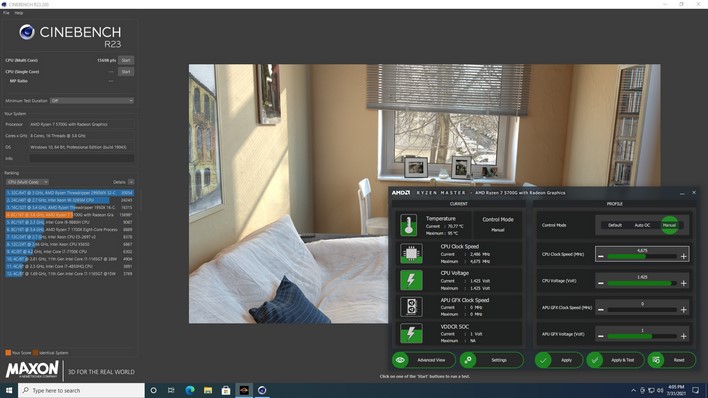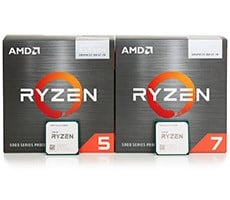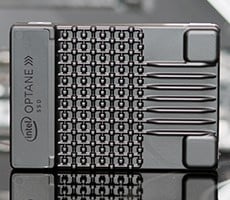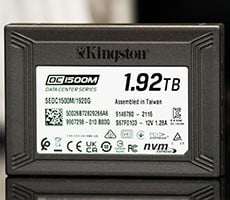AMD Ryzen 5000G Series Review: Zen 3 APUs Deliver Big Value
For our next series of tests, we moved on to some game-related metrics with 3DMark, specifically the physics benchmark that's part of the Time Spy test, along with a handful of actual games. For the 3DMark Physics test, we simply create a custom 3DMark run consisting solely of the physics test, which is CPU dependent, and report the results...
UL 3DMark Time Spy CPU Physics Benchmarks
Gaming And Graphics Benchmarks
We also ran some mid and high-resolution game and graphics tests on our test rigs with 3DMark, Gears Tactics, and Metro Exodus. We used 3DMark's default Time Spy preset, and both of the games were run in two different configurations -- either 1080p with Medium details, or 4K with High/Very High/Ultra details. The lower resolution tests are more CPU bound, while the higher resolution tests are more GPU bound.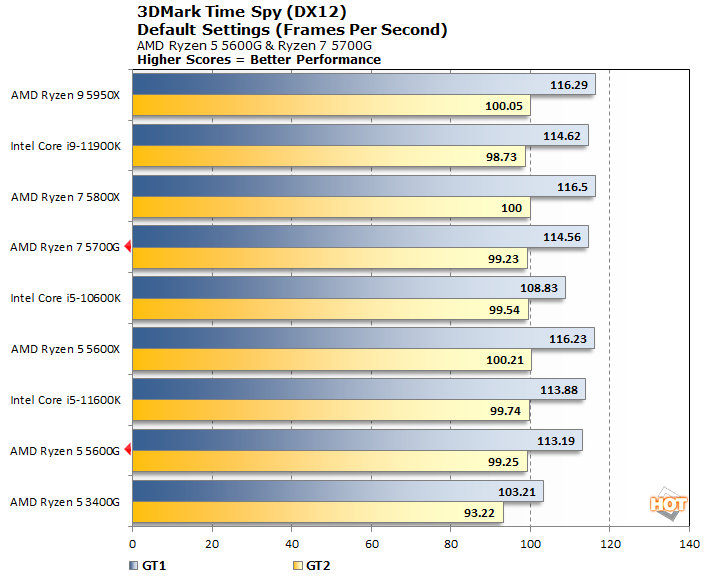
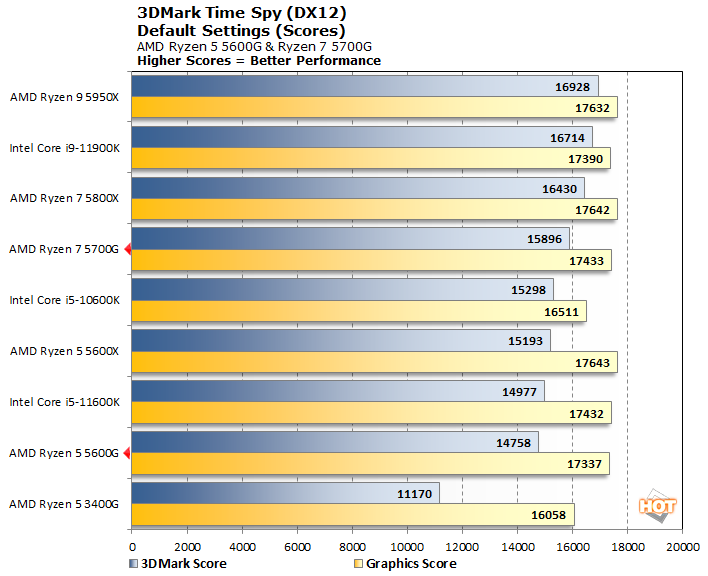
Time Spy showed the Ryzen 7 5700G and Ryzen 5 5600G performing well and competing favorably with all of the other modern processors we tested. In a GPU-bound instance like this, the 8-core Ryzen 7 5700G and 6-core Ryzen 5 5600G offer plenty of oomph to keep the GPU fed.
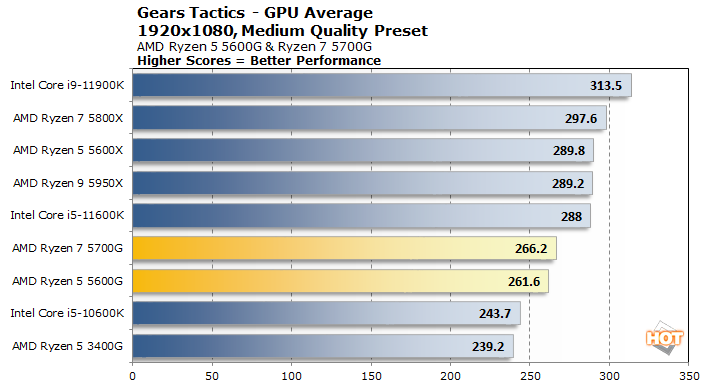
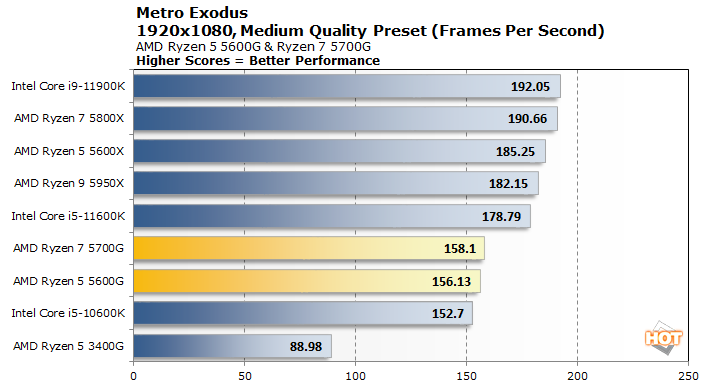
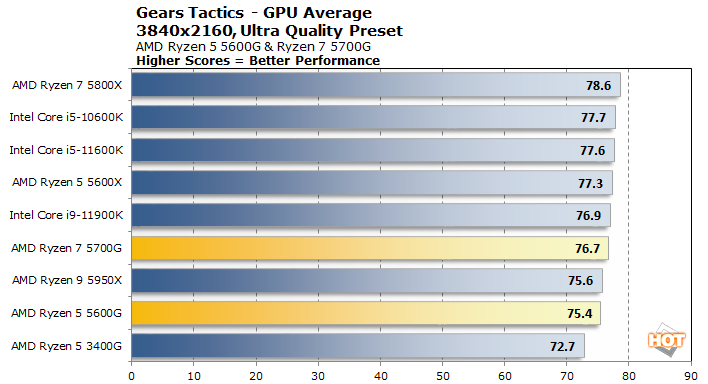
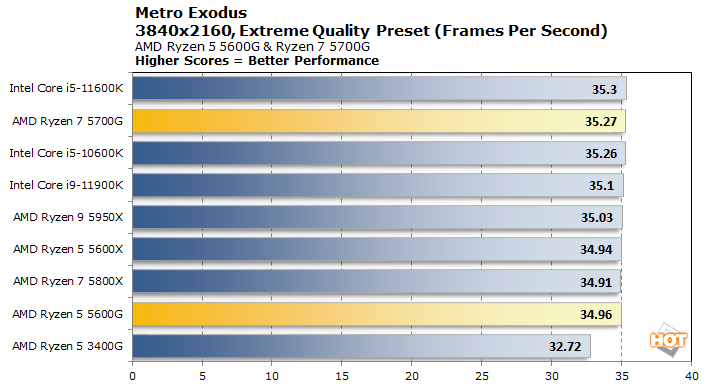
With the screen resolution and in-game image quality increased, and the performance bottleneck shifted onto the GPU, though, framerates level off the Ryzen 7 5700G and Ryzen 5 5600G finish right in the mix with all of the other current-gen processors.
Ryzen 5000G Series Integrated Graphics Performance
We also ran a couple of tests on both the Ryzen 7 5700G and Ryzen 5 5600G using their integrated Radeon graphics, and compared them to a handful of numbers we had available using other Intel solutions and an array of Radeon IGPs, from both desktop and mobile platforms.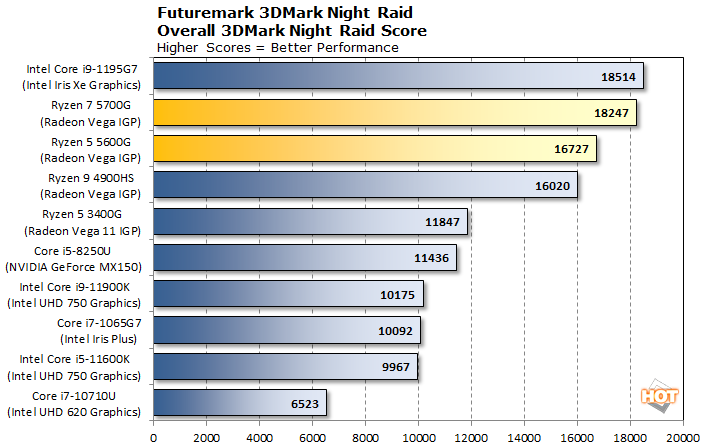
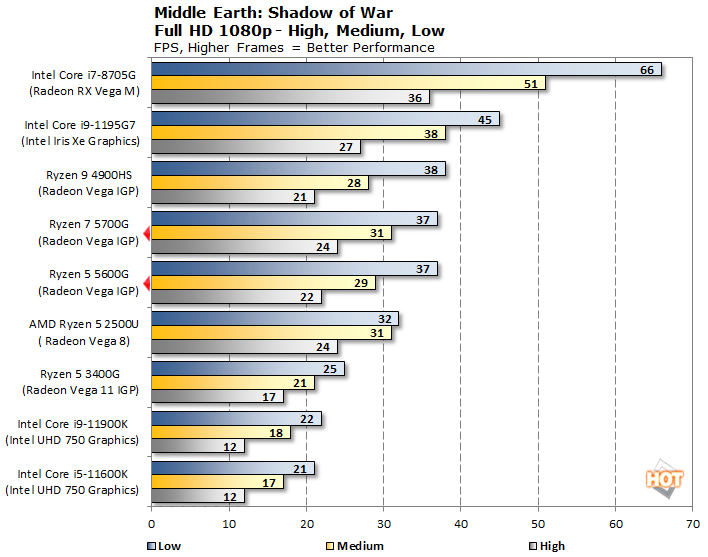
Integrated GPU performance with both the Ryzen 7 5700G and Ryzen 5 5600G is very good. In Night Raid, AMD's latest APUs finish near the top, trailing only Intel's fastest integrated Iris Xe graphics engine. Losing that single CU and 100MHz also pulls the Ryzen 5 5600G's graphics performance down about 8.3% versus the 5700G. In Shadow of War, the grouping of current-gen Radeon iGPUs remains tight, but they clearly outrun the older Ryzen 5 3400G.
Overclocking The AMD Ryzen 7 5700G
We also spent some time overclocking the Ryzen 7 5700G, to see if we could wring any additional performance from the processor. AMD offers an array of tools for overclocking Ryzen 5000 series processors, including "one-click" methods like Precision Boost Overdrive and Auto-Overclocking via Ryzen Master, or manual overclocking via Ryzen Master and/or the BIOS.Because all Ryzen 5000 series processors are unlocked -- including these new 5000G series APUs -- manual overclocking is simply a matter of altering a few multipliers, tweaking voltages, and dealing with the additional heat and power requirements. These processors can be overclocked by adjusting base clock frequencies as well, so it's possible to really fine tune the end result if you so choose. The quickest and easiest gains will be come by tweaking multipliers, though.
We took a somewhat conservative approach to overclocking the Ryzen 7 5700G to ballpark an approximate “worst case scenario”. Our results should be repeatable by almost anyone, assuming you’ve got similar hardware and everything is working properly. You shouldn’t need exotic cooling to pull off what we did here. We used AMD's Wraith Prism cooler with the motherboard and processor installed in a mainstream NZXT mid-tower. Of course, more exotic cooling and lower temperatures will result in higher overclocks, but hardcore cooling is not a necessity to achieve some significant performance gains with the Ryzen 5000G series.
With their default settings, these processors run nice and cool. Both of our chips hovered right around the 70°C mark after 10 consecutive Cinebench runs, using only the the AMD Wraith Prism. And both APUs had no trouble consistently running at (or right around) their maximum rated boost frequencies.
To see what our particular Ryzen 7 5700G could do on air-cooling, we tried all of the overclocking modes available within Ryzen Master -- PBO, AutoOC, and Manual. If you recall, PBO allows the processor to consume more power through the socket, and exploit any additional current headroom available in motherboards with robust VRM configurations that exceed AMD specifications. AutoOC works similarly to PBO, but manual overclocking requires tuning frequencies and voltages on your own, though the processors will still downclock when idle to conserve power.
Using PBO or AutoOC, we saw some CPU cores boost to just over 4.7GHz, with voltages in the 1.4v range (give or take). PBO and AutoOC worked well in our system and seemed to boost performance considerably, while taking advantage of all of the thermal headroom available with our cooler. Even with the mainstream AMD Wraith cooler, the Ryzen 7 5700G's temperature never came close to the 95°C ceiling when using PBO or Auto OC. Temperatures peaked in the mid-80s, max.
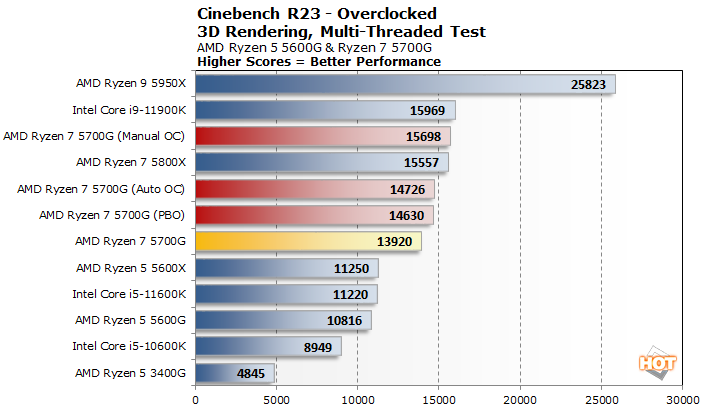
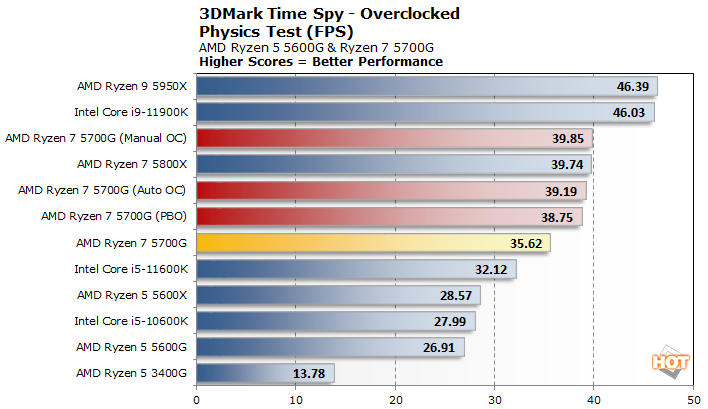
While we experimented with various overclocking settings, we re-ran a few benchmarks and saw some significant performance improvements. With a capable motherboard and cooler, simply enabling PBO or AutoOC will result in some big performance gains and push the Ryzen 7 5700G right into the same territory as AMD's Ryzen 7 5800X.


